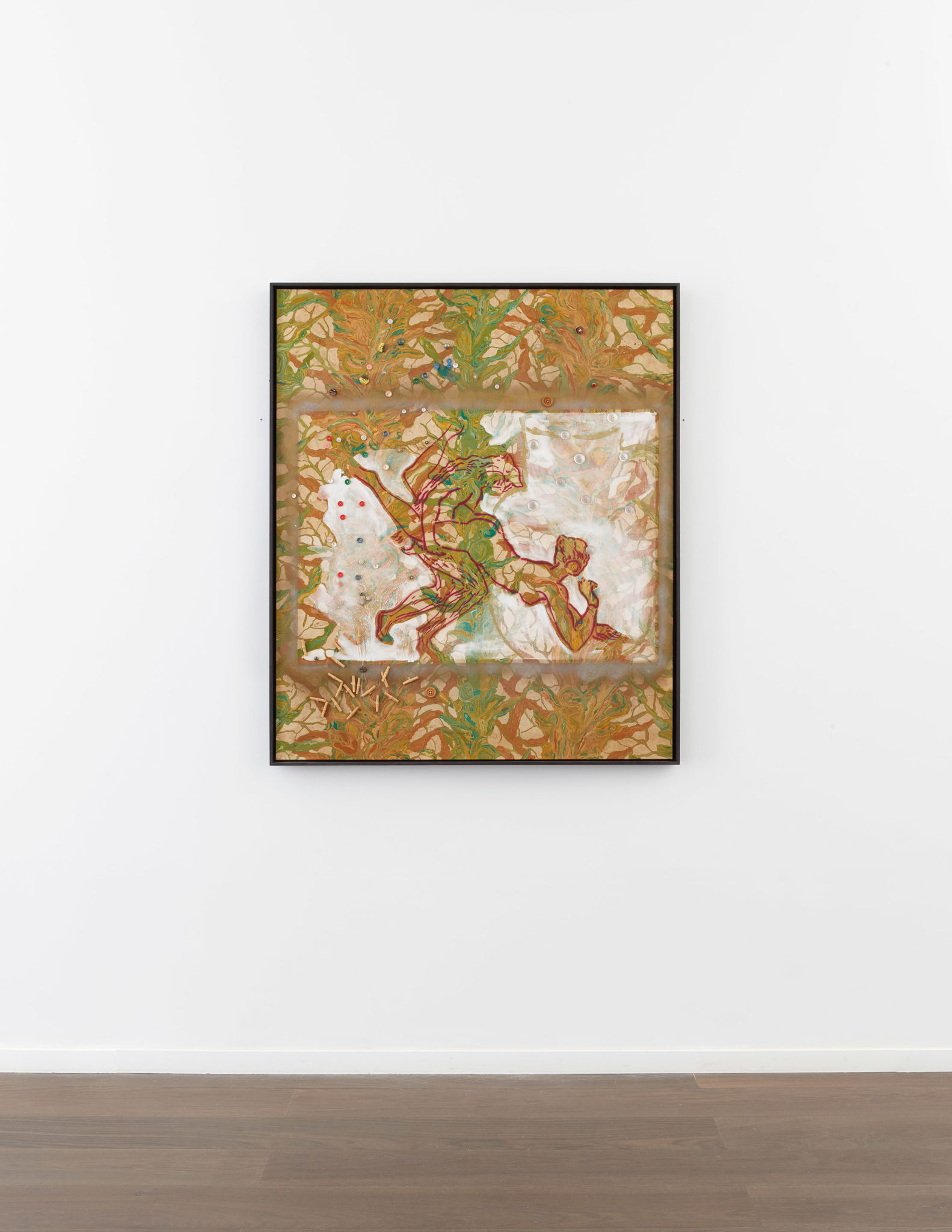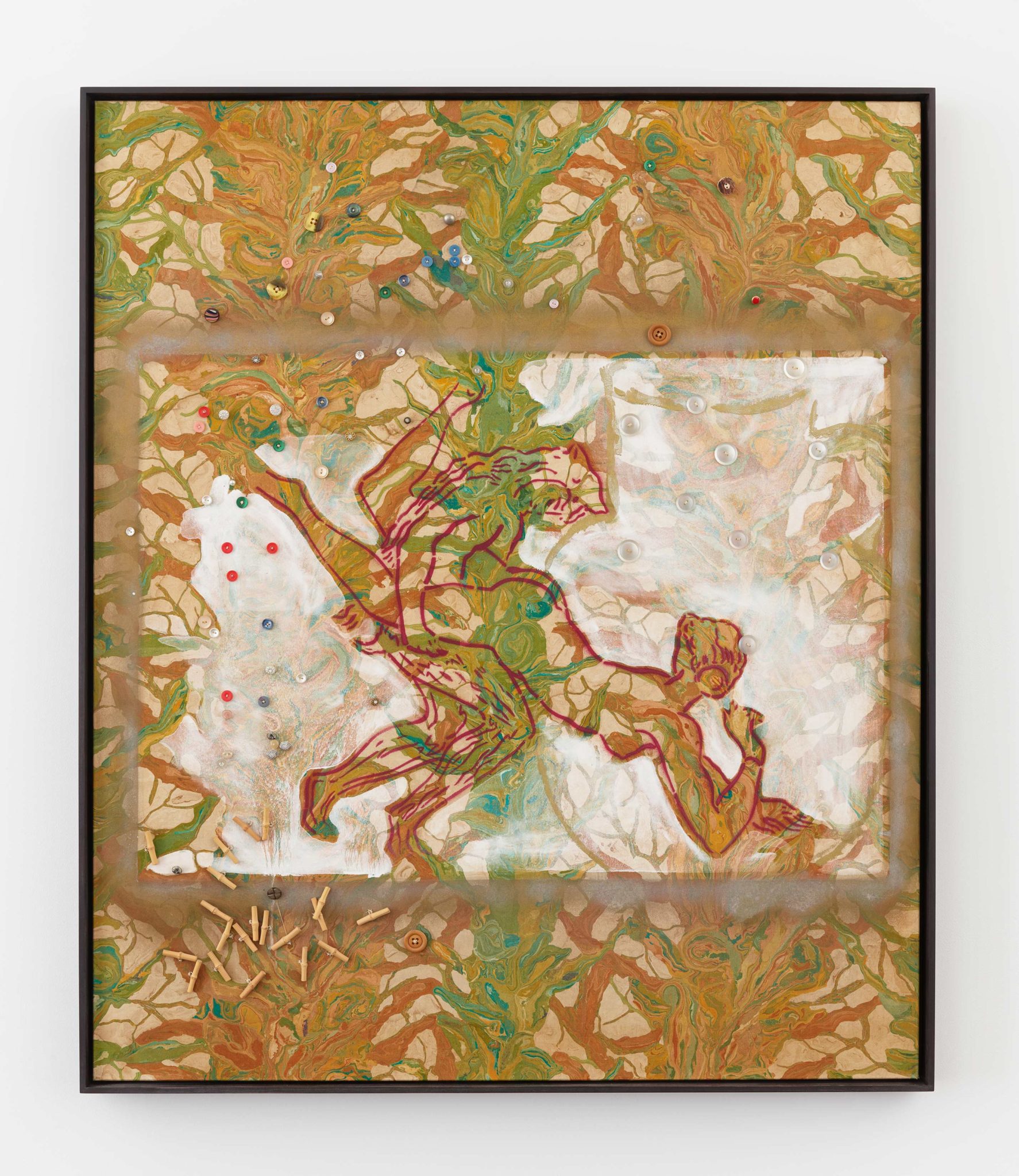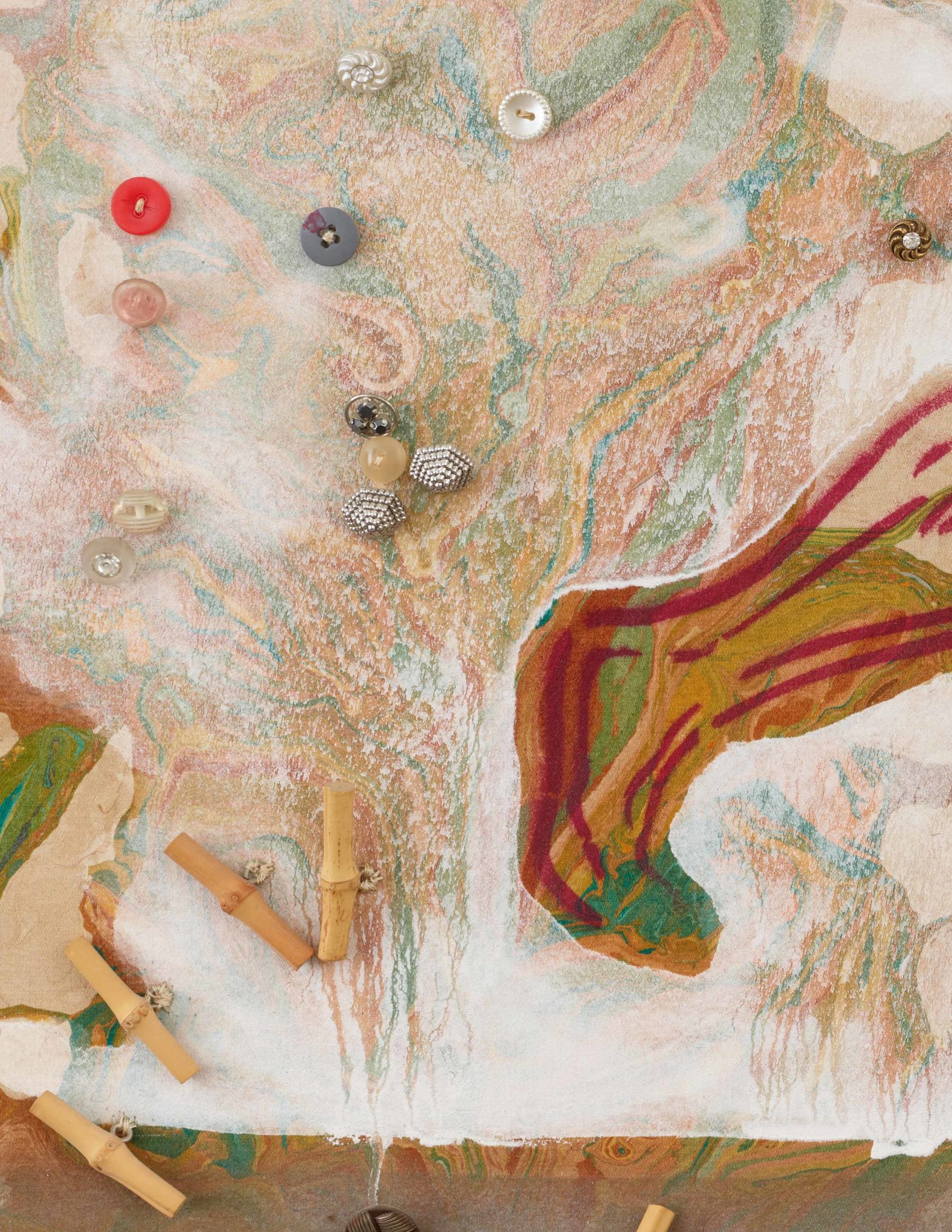Sigmar Polke
Untitled, 1980-81
Metallic paint, acrylic, buttons, and toggles on fabric
51 x 43 inches (129.5 x 109.2 cm)
Signed and dated S. Polke 80/81 (on the reverse)
© Estate of Sigmar Polke / Artists Rights Society (ARS), New York / VG Bild-Kunst, Bonn, Germany
Photo Elisabeth Bernstein
Sigmar Polke began Untitled in 1980, the year he returned to painting after a nearly decade-long hiatus from the medium (he had previously shifted his focus to photography). With its printed fabric support and its incorporation of three-dimensional objects, the work is exemplary of this period in the artist’s career. The majority of the 1980s witnessed Polke’s examination, via painting, of the nature of image-making in a century defined by the exponential production and circulation of images. Accordingly, through a limited economy of materials and formal tropes, Untitled succinctly converges multiple aspects of an image-saturated culture into one seemingly straightforward picture.
Polke’s paintings are marked more by a consistent irreverence than a consistent visual or formal style. This tone arises in the current work’s use of a muted plaid fabric as a support, which evokes sundry domestic items (tablecloths, sofas, bedspreads, etc.) and plays on the perceived neutrality of painting’s traditional textile support (i.e., canvas). Polke’s use of overdrawing is a technique that dates back to the beginning of his career, and is the primary element through which the satire of his works is communicated. His figures take on the clean, graphic aesthetic of advertising, but with a twist to upend the pictorial hierarchies with which his work is engaged.



